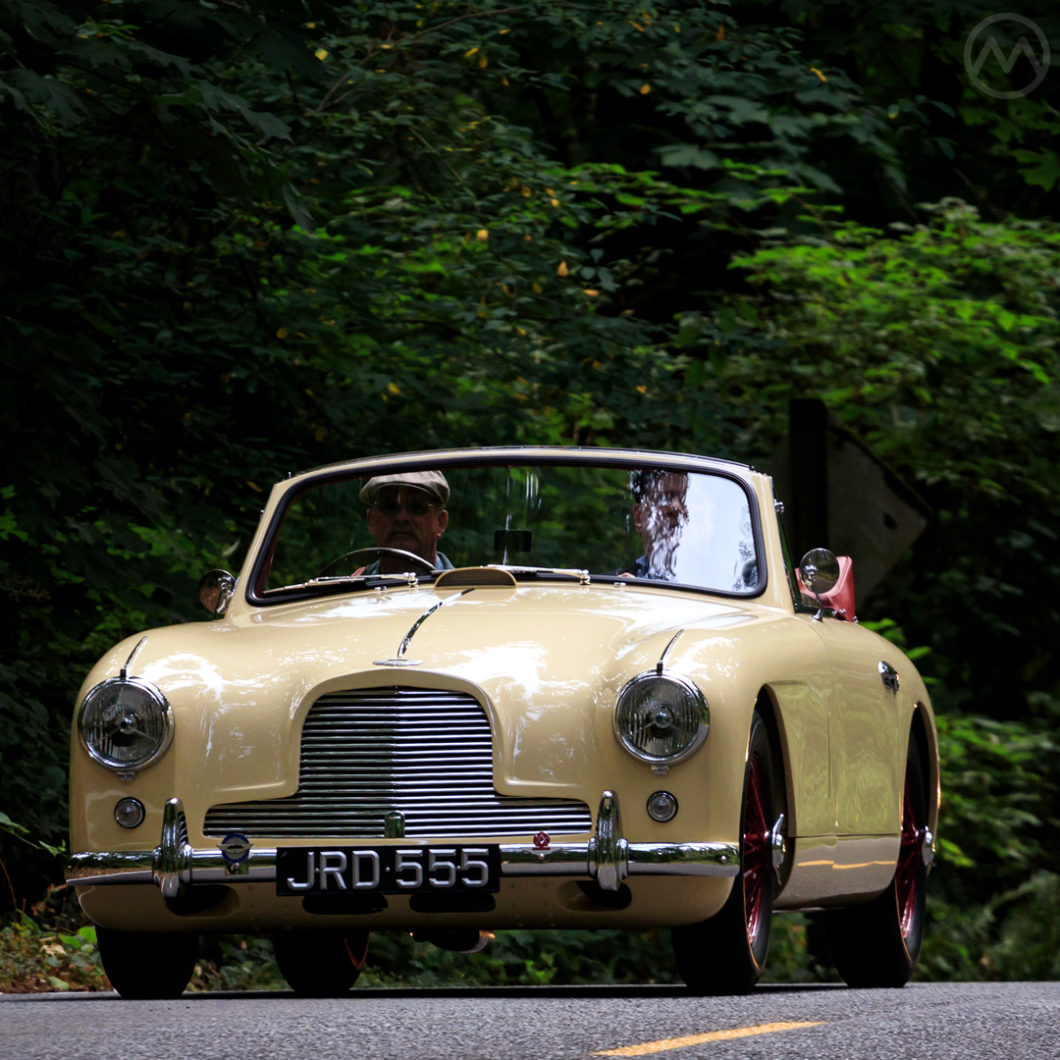Keen on speed from a young age, David Brown was a natural fit for Aston Martin. Though his father didn’t drive, he grew up around the family business—David Brown & Sons. Founded by his grandfather, it made vehicle and machine parts. During Brown’s youth the company even ventured into building a car, the Valveless, built from 1908-1915. Only a tiny number were made, but it sparked his interest in cars.
He started with motorcycles and moved on to race cars in the mid-1920s, designing his own car and racing modified Vauxhalls to considerable success, but in the 1930s much of his time was spent running and growing the family business. Starting in 1936, which included farm tractors—Brown teamed up with engineer Harry Ferguson to make Brown-Ferguson tractors.
Income from the war and the tractors made the already-wealthy Brown much wealthier, and in 1946, he spied an ad in the London Times: “High Class Motor Business for sale, £30K.” A few days after making inquiries, Brown was driving Aston’s Atom prototype and bought the nearly moribund company for £20.5K.
A New Start for Aston Martin
This was a familiar situation for the company. Aston had many previous saviors because, almost since its founding in 1913, it had been a (really cool) money pit. Its history was a roller-coaster of racing triumphs and financial busts; Aston had already seen a cast of characters that could have come from the pen of John Galsworthy.
Multiple playboys had drifted in and out of its ownership and engineering staff, though some, like longtime engineer “Gus” Bertelli, gave a great deal to keep the company going, rolling with every financial punch and sometimes working without a salary. But Brown was different—his resources were vast, he had considerable engineering experience, he was familiar with the company from the Bertelli era, and he himself was the target market for cars like Aston-Martins.
The Lagonda Connection
The Atom sedan, conceived in 1939, was quickly reworked into a convertible (the Aston 2-Litre Sports) by designer Claude Hill. But even before the 2-litre was on sale, Brown wanted more speed—and he knew where to get it. He simply went out and bought ailing Lagonda, which cost about two and a half times what Aston had cost him. A bargain in hindsight.
Brown took all the designs and intellectual property but not Lagonda’s factory – he’d bought the company for its dream team of engineers. The roster was led by W.O. Bentley, Frank Feeley, and ex-Invicta man Willie Watson.
Brown’s attention had been drawn by the new DOHC six Bentley and Watson had designed in 1946. Brown knew it would be a good fit for his purposes. It was hard to ignore the Bentley legacy, too.
For 1949, Feeley designed a new Aston around the engine. Three prototype DB2s debuted at the 1949 LeMans 24-hr, and the DB2 production car soon followed. A huge success, the DB2 was at home on road or track – but Aston’s race cars soon diverged.
Aston fielded the DB3 race car by 1951, but it was less than successful and gave way to Watson’s DB3S for 1953. With sports car racing changing at a rapid pace, the DB2 would not evolve into a more dedicated road car (not that it was bad at that before, mind you).
DB2 Becomes DB2/4
The DB2 evolved into the more luxurious and capacious DB2/4 in 1953.
There wasn’t any need to tamper with the formula that had quickly put Aston on the map. The DB2/4 was a slightly larger, slightly more powerful DB2 with updated styling and a 2+2 configuration. The DB2/4 could reasonably accommodate (smallish) actual adults in the back, although it was still meant as a gentleman’s express, not a family car. For that you could buy a related four-door Lagonda 3-litre.
It’d do nearly 120mph from its 140hp six, not fast today but very fast in 1953, and it was gifted with race car handling and a taut ride from its origins in the DB2.
DB2/4s did compete the Monte Carlo Rally and the Mille Miglia, but their mission was as a luxury GT for, well, people like David Brown. A drophead arrived in the spring of ‘54, powered by a larger 2.9L version of the six. The DB2/4 wasn’t quite as fast as the XK120, but it was far more exclusive.
A very expensive car, there seemed to be a buyer for every car the old Feltham works could turn out. Eventually, production would be moved entirely to Newport-Pagnell, which became HQ in 1954.
The car went through two more evolutions, the DB2/4 Mk II in 1956 and then a heavier restyle with more changes as the DB Mark III in 1957, before being superseded by the DB4. Built at Newport-Pagnell, the DB4 ran concurrent with the older model for parts of 1958/59.
“JRD 555” – chassis LML 722—was sold new in June of ‘54 to car dealer William Vincent, bodied in aluminum by Mulliners. The card did 130K+ miles before coming stateside in the 1970s, ultimately being parked after a minor accident in 1976. It was restored by Washington collector Mike Stone from 1982-2011, with more than a little help from Britsport Seattle.

